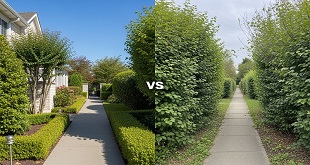It is more competitive than ever to have your work stand out online. But it’s not just about having a single article or a single product that stands out. There is a lot of work that goes into your website to present it to searchers.
When somebody enters the product or a question into Google, or another search engine, they will be presented with their closest matches.
What SEO does for you is make sure that your products, images, website, and content are optimized to answer the questions that will drive those sales.
SEO covers making sure that all of your content delivers the correct information to the right people.
There are some tried and true methods of making sure that your SEO techniques are up-to-date and performing. Unlike some other methods, SEO takes a few months to a year to make an impact. However, you can see an increase in traffic and conversions ahead of that.
SEO is a long-term change to how you tackle content on your website.
UX
Never underestimate the power of the user experience. Search engines aren’t just trying to give users the fastest answer; they’re trying to provide them with the one that has the best user experience.
This means the content, context, and user experience on your website are all very important. The front end of your website, the bit that people see, needs to be fast loading and deliver all of the information.
Sites that are too slow to load often will not make it high in the search rankings; Google and other search engines like to present users with websites that feel up-to-date, professional, and trustworthy.
To tackle this issue, use Google Optimize; it is easy and free. You’ll need to create an account or log into yours to run the checks.
Content
You know that your content needs to offer value, but the value needs to speak directly to the audience. Whatever your product or service needs to have content that supports it.
Make sure the content is easy to read; after you have written it, break down the more extensive paragraphs into shorter chunks. It makes it easier to read for the user.
Add in headers so that users can quickly scroll to the content they need without trouble. Bullet points can be beneficial too when you have data or facts that need to be outside of a paragraph.
Keep some white space, but also add some images or screenshots to support your content. The white space allows the eyes not to be overwhelmed, and the photos prevent your content from becoming a wall of text.
Photo by Andrew Neel on Unsplash
PPC
PPC is one of the most cost-effective ways to see a big jump in where you sit on the search engine ranks.
You are flexible with your ad spend; you can bid on terms that you think will see an increase in traffic, it can be done alone, but you will get results with proven PPC management services.
PPC allows you to convert buyers, increase profit, see an improvement in brand awareness, and reach your audience more effortlessly.
Voice Search
Don’t get left behind when it comes to modern search technology. Many people now use smart home speakers to ask questions, and you need to factor that into your SEO strategy.
Voice search and text search are used slightly differently, so the optimization of voice is different.
Someone who is typing might only type a concise search option. However, when they ask the questions to the smart speaker, it tends to be longer.
While there are broader questions, voice search is also often more local. ‘Are there any printers nearby?’ as an example?
When we use voice search, we are more likely to get a single answer, or perhaps the top three pages that answer that question.
It is suggested that 40.7% of voice search results are from featured snippets. So when you are creating your content, make sure your snippet is optimized for voice.
Mobile First
While your website must be perfect on a desktop, you really should create a website with mobile in mind. Almost everyone with a smartphone will use it to search the web and purchase too.
Even Google has made the conscious decision to work for mobile phones first. It primarily uses a smartphone-user agent to crawl your website.
Longer content
Short content is relevant, valuable, and quick to consume. But if you want to see an increase in the backlinks you get, you need to be looking to create longer content.
Between 1000-2000 you are likely to secure up to three backlinks, but if you are looking to increase what you see, you will get long pieces between 3000-10000 words. You can expect a minimum of 5.
The more exciting and valuable your long content, the more likely you will receive a constant link back from newer content created elsewhere.
Photo by Márton Kopasz on Unsplash
Refreshing old content
Unless you have a professional writer on your books, then creating long-form content all the time will become quite the task.
Your established content probably already has traffic and some authority – which makes it the perfect foundation for a refresh.
Any time-sensitive content is ideal for a refresh and update of the links, information, and products. Head into the metrics for that post, and see how people found it organically. Use that information to bulk out the post with more relevant information.
While you are refreshing content, it is time to consider two main content creation methods. One is the content creation pyramid, and the other is clustering.
For the pyramid, give the most valuable content at the top – the takeaways and the newsworthy facts, the middle should bulk out the story with the main details, and the bottom is supporting content.
Clustering your content is linking relevant topics together in a way that makes sense for your reader. You take the main page and then create pages around the subject, all with a link back. The cluster pages will give information about the service or product.
And finally, keep creating fresh content. Fresh content is great for users but also signals to the search engines you are active and
Are you looking for more ways to see some conversions? How to Make Your E-commerce Business Successful?
 Entrepreneur Resources Your source for small business information
Entrepreneur Resources Your source for small business information




